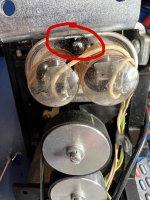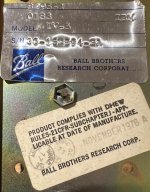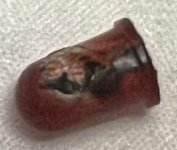Hi,
I was lucky enough to stumble into an IBM 5100 in the last couple of weeks. It has in been in storage for years (likely decades) and to the best of my knowledge has not been touched from its original working state since. I've cleaned it up quite a bit, carefully opened it, removed a lot of dust and the degraded foam on the cards, reseated them, checked and cleaned the connectors off the A1 board, etc. At present I get no video output on either the internal CRT and the external BNC. Unfortunately, my testing so far suggests the display card might be bad but given I've never seen the 5100 in person before I thought I would check-in here to see if anyone might have some "next steps" advice.
Here's a quick summary of the system and my steps so far:
Any words of wisdom from those who have worked in the 5100 before?
Many thanks!
I was lucky enough to stumble into an IBM 5100 in the last couple of weeks. It has in been in storage for years (likely decades) and to the best of my knowledge has not been touched from its original working state since. I've cleaned it up quite a bit, carefully opened it, removed a lot of dust and the degraded foam on the cards, reseated them, checked and cleaned the connectors off the A1 board, etc. At present I get no video output on either the internal CRT and the external BNC. Unfortunately, my testing so far suggests the display card might be bad but given I've never seen the 5100 in person before I thought I would check-in here to see if anyone might have some "next steps" advice.
Here's a quick summary of the system and my steps so far:
- The system powers up, fan funs, the check light flashes very briefly, and then that is as far as it gets. I am not sure if the tape drive is running.
- The CRT does glow after a bit but I don't perceive any change looking at the display. I have only adjusted the external brightness -- nothing onboard the CRT's PCB.
- The CRT input connector shows +!2V (reads around +13V) -- there is a signal ground but the ground wire on pin 1 has no connection in place.
- I don't have a lot of experience with video signals but the sync outputs look suspicious to me (in general I see a waveform but nothing that seems like a well organized sync pulse).
- On the A1 board pins I see +5V but it seems a bit low to me at around 4.6. +12V reads around +13V (like the CRT connector). All the front switch pins seem to behave themselves.
Any words of wisdom from those who have worked in the 5100 before?
Many thanks!




